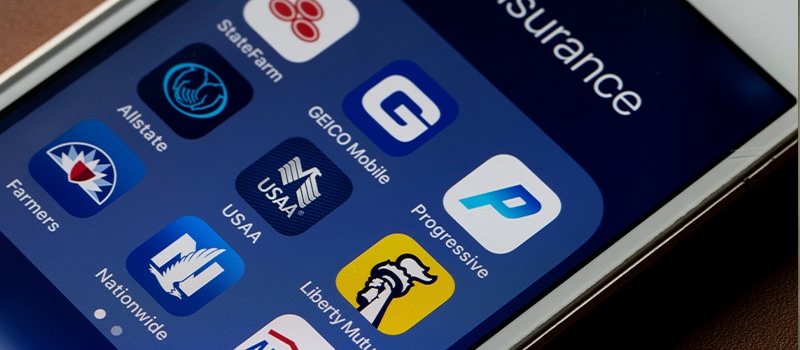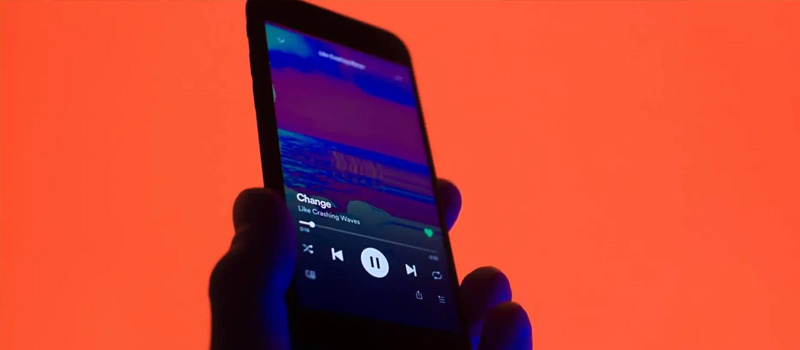Some people resonate so well with you, it's hard to get them off your mind, and the same is true with brands and their products.
This isn’t magic; it's the science of marketing psychology.
By delving into the 19 principles outlined in this article, you'll uncover the mysteries of what makes buyers tick and how to effectively influence their decisions.
Once you’re armed with these actionable insights, you can craft campaigns that not only captivate, but convert, merging the boundaries between the heart's wants and the mind's rationale.
In this article, you'll discover how to harness the po
What is Marketing Psychology?

At its core, marketing psychology merges two distinct disciplines: psychology and marketing. It seeks to understand human behavior and decision-making processes, applying these insights to create compelling marketing strategies.
Why is this relevant to branding?
Well, marketing psychology goes beyond just understanding what consumers want. It digs deep, aiming to unravel why they want it.
This gets to the core of why we behave the way we do as humans, which, personally, fasicnates me.
Every purchase decision, from the mundane to the significant, is rooted in psychology.
Consumer psychology plays a crucial role in crafting marketing campaigns that resonate with a specific group of people, making sure that a brand's message aligns seamlessly with the target audience's desires and needs.
Why Marketing Psychology Matters in Branding

Marketing psychology has been a silent whisperer guiding countless successful campaigns.
It provides strong insights into consumers' minds, influencing purchasing decisions and ensuring business success.
A memorable example is Coca-Cola's "Share a Coke" campaign, where individual names were printed on labels.
With this approach, Coca-Cola tapped into the powerful emotion of personalization, encouraging consumers to buy a product that felt uniquely theirs.
PRO Brand Strategy BluePrint
Build Brands Like A Pro Brand Strategist

Principles in Action: Some Brands Get It Right (Some Don't)

Not all brands manage to hit the nail on the head when it comes to effective consumer psychology usage.
Pepsi’s “Live For Now” campaign was completely tone deaf, and Nivea’s “White Is Purity” unintentionally spoke to an “exclusivity” more prevalent in generations past.
But when brands get it right, it's nothing short of marketing magic.
From leveraging social proof to mastering the art of scarcity, some brands have truly mastered the marketing psychology game.
19 Principles to Influence Buyers

To put it simply, a branded house is a company that uses its name and reputation across all its products and services.
It's like a famous chef whose name is on every dish in a restaurant, regardless of whether they cooked it or not.
1. Scarcity & Urgency

We're all wired to want things that are limited. When we think something is running out, we desire it even more.
By highlighting that a product is limited in quantity or available for a limited time, businesses can stimulate quick purchasing decisions.
Ever seen a "Only 3 items left in stock!" message while shopping online?
E-commerce platforms like Amazon often employ this tactic.
2. Social Proof

People tend to do what others are doing, trusting the judgment of the crowd.
By showcasing reviews, testimonials, or numbers of products sold, companies can influence potential customers.
TripAdvisor showcases user reviews to influence the decisions of prospective travelers.
3. Reciprocity

We inherently want to return a favor when someone does something for us.
By offering something for free, businesses can instill a feeling of indebtedness, prompting the consumer to give something in return.
Dropbox gives free storage space for referring friends.
4. Anchoring

To put it simply, a branded house is a company that uses its name and reputation across all its products and services.
It's like a famous chef whose name is on every dish in a restaurant, regardless of whether they cooked it or not.
5. The Decoy Effect

A third option can sometimes make another option seem more attractive.
By introducing a third, less attractive option, brands can drive consumers towards the more expensive choice.
The Economist once offered three subscriptions: online-only, print-only, and print + online, with the last two priced the same, making the combined subscription seem like a steal.
6. Color Psychology

Different colors evoke different emotions and actions from consumers.
Brands choose specific colors for logos, CTA buttons, and more based on the emotions they want to evoke.
Ever notice how many call-to-action buttons are red, like those on YouTube? Red often inspires action and excitement.
7. Paradox Of Choice

Too many choices can overwhelm and can lead to non-decision.
By limiting options, brands can streamline decision-making processes for consumers.
In a famous study, a jam display with fewer options resulted in more purchases than a larger assortment.
8. Authority and Credibility

We tend to obey authoritative figures and trust credible sources.
By showcasing industry experts, certifications, or authority figures related to the product, brands can bolster credibility.
When Crest showcases dental association approvals, it's leveraging authority in its marketing.
9. Emotional Triggers

Emotions play a pivotal role in our purchasing decisions.
By tapping into specific emotions like happiness, fear, or nostalgia, brands can form deeper connections.
Coca-Cola's marketing campaigns often revolve around happiness and togetherness.
10. Consistency and Commitment

People like to be consistent with their past actions.
By getting someone to commit, even in a small way, they're more likely to follow through on related actions in the future.
After signing up for a free trial, users of software platforms like Adobe are more likely to purchase the full version.
Explore Brand Strategy
Programs & Tools
11. Liking & Affinity

We're more likely to be persuaded by people or companies we like.
Brands often try to create likable personalities or affiliate with celebrities and influencers.
Nike's collaboration with Michael Jordan (Air Jordans) taps into fans' affinity for the basketball superstar.
12. Storytelling

Stories captivate human attention and can build deeper connections.
Through relatable narratives, brands can make their products or services more memorable.
Apple’s 'Shot on iPhone' campaign tells the stories of people from different backgrounds, capturing moments with their iPhones.
13. Loss Aversion

People feel the pain of losing something more than the pleasure of gaining something of equal value.
Brands highlight what consumers might lose out on if they don’t take a specific action.
Insurance companies emphasize the potential risks and losses if one is uninsured.
14. The Halo Effect

Our impression of someone (or some brand) in one area can influence our opinion in another area.
If a brand excels in one product, consumers are likely to think highly of their other products.
If consumers love Apple's iPhone, they might be predisposed to think the MacBook is of equal quality, even if they haven't tried it.
15. Repetition

Repeated exposure to a message or brand increases its familiarity and preference.
Brands consistently advertise to ensure consumers remember them.
McDonald’s "I’m Lovin’ It" jingle, repeated across commercials, becomes instantly recognizable.
16. Contrast Principle

We often judge things in comparison to other things (contrasting light vs. dark, cheap vs. expensive).
By positioning their products in contrast to competitors or a previous version, companies can highlight their advantages.
A car company might show their vehicle's features as superior in comparison to a competitor's.
17. The Endowment Effect

Once we own something (or visualize owning it), we value it more.
By allowing consumers to customize products or visualize them in their own space, brands can stimulate the endowment effect.
IKEA's AR app lets users visualize furniture in their own homes, making them more inclined to purchase.
18. Framing

The way information is presented (or "framed") can drastically alter the way it's received.
By presenting the same information in a positive or negative light, brands can influence perception.
95% fat-free sounds much more appealing than a product with 5% fat, even though they mean the same thing.
19. Commitment Escalation

Once committed, people are likely to continue an endeavor.
By getting customers to make small commitments or purchases, brands can lead them towards larger commitments later on.
Freemium models in software platforms; once users have invested time and effort, they're more likely to upgrade.
Theories and Models Underpinning These Principles

Beyond the immediate application of marketing principles lies a bedrock of psychological theories.
For instance:
Maslow's Hierarchy of Needs

This model charts the spectrum of human needs, from the basic (like food and shelter) to the aspirational (like esteem and self-actualization).
Brands can tap into these levels to appeal to consumers.
Luxury brands, for example, appeal to the higher tiers of esteem and self-actualization.
Fogg Behavior Model

Designed by Dr. BJ Fogg, this model suggests that for a behavior to occur, three elements must converge:
Motivation
Ability
Trigger.
This is invaluable for marketers, especially when considering retargeting campaigns or reminder ads.
Behavioral Economics in Marketing

Delving into behavioral economics provides a goldmine of insights. This discipline dives into the nuances of consumer behavior, revealing that humans are predictably irrational.
Some key concepts include:
Cognitive biases:
Our brains have in-built shortcuts, but these shortcuts can sometimes mislead us.
Understanding these biases (like the confirmation bias or anchoring) can allow brands to communicate more effectively.
Prospect Theory:
Coined by Kahneman and Tversky, it theorises that people make decisions based on the potential value of losses and gains, not the final outcome.
This is why sales or discounts are so effective.
Emotional Branding

At the crossroads of marketing and psychology is the powerful world of emotional branding.
Emotions are potent motivators, often trumping logic. Brands that harness emotions build deeper connections.
Dove, for instance, taps into feelings of self-worth and beauty, positioning itself not just as a product but as a catalyst for self-confidence.
The Role of Neuromarketing

Science-fiction? More like marketing's future. Neuromarketing involves using neuroscience techniques, like fMRI scans, to study how the brain reacts to marketing stimuli.
The findings can be fascinating:
Branding:
Neuromarketing studies have shown that strong brands activate specific parts of the brain associated with emotions and memories.
So when you think of your favorite brand, your brain lights up in very specific ways.
Pricing:
Ever experienced 'sticker shock'? Neuromarketing has shown that unexpected high prices can activate the brain's pain regions.
Practical Steps to Apply These Principles

Getting into the mind of your consumer is beneficial, but how do you apply these principles practically?
Research:
Start with thorough market research. Understand the demographic and psychographic makeup of your target audience.
Segmentation:
Not all consumers are the same. Segment your audience based on their behaviors, needs, and values.
Tailored Campaigns:
Use your insights to design marketing campaigns that speak to each segment's unique needs.
Feedback Loop:
Always be listening. Use surveys, feedback forms, and social media listening tools to refine your strategies continually.
Continual Learning:
The field of marketing psychology is dynamic. Stay updated with the latest research and findings to stay ahead of the curve.
Over To You
Marketing psychology isn't just another buzzword in the ever-evolving lexicon of the business world.
It's an essential, robust bridge that connects the logical world of sales and the oft-mysterious realm of human behavior and desires.
By diving deep into the 19 principles we've explored, businesses can attain a clarity that transforms their strategies from mere pitches into resonant symphonies that consumers not only hear but feel.
Understanding and ethically leveraging these principles doesn't just boost numbers; it builds brand loyalty, trust, and narratives that linger in consumers' minds. And while it might seem daunting at first – blending art and science, emotion and data – the rewards are well worth the effort.
As businesses venture forth into an increasingly competitive marketplace, understanding the heartbeats and whims of their audience will be their compass and beacon.
Here's to harnessing the power of marketing psychology and creating campaigns that don't just sell but also inspire, resonate, and endure.
FAQs
1. What is the key benefit of using marketing psychology?
It provides businesses with a better understanding of consumers, enabling them to create more effective marketing strategies.
2. Can small businesses benefit from these principles?
Absolutely! Whether you're a global giant or a local bakery, understanding your customers is key.
3. Is a psychology degree essential to apply these principles?
While beneficial, real-world experience and continual learning can be just as effective.
4. How do I start with marketing psychology?
Begin by understanding your target audience and their needs.






